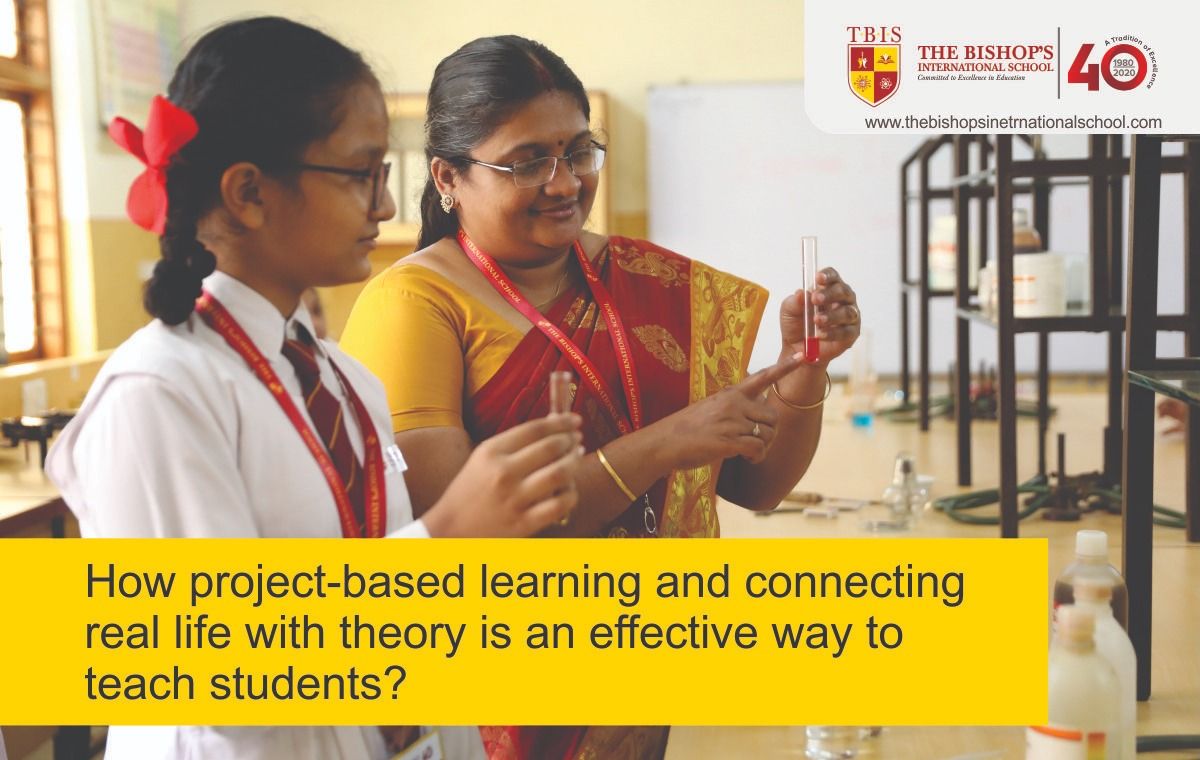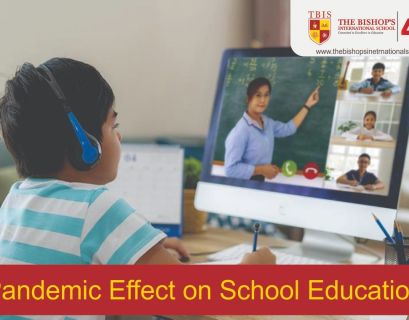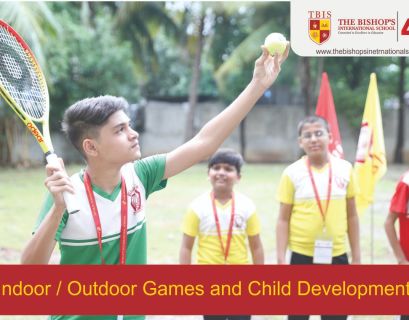
How project-based learning and connecting real life with theory is an effective way to teach students?
Project based learning assists with meeting today’s learning model. As PBL emphasizes the authentic use of information, it adapts well with common basic standards. Teaching students a project-based learning approach to ...
Project-based learning is a most beneficial teaching method that has many benefits for students to build different types of skills such as problem-solving, critical thinking, project management. In-depth understanding, empowerment and many more. It provides teachers with the opportunity to develop a stronger relationship with students through the role of facilitators of practical learning. Project-based learning is a teaching method where students work together and learn through practice.
Connecting real life with theory will help students to understand the concept more effectively. It gives a curiosity among the students to learn more. By introducing the real-life context and technologies into the program through a project-based learning method, students are encouraged to become self-employed and lifelong learners. Teachers are connecting with administrators, sharing ideas with their colleagues and parents. Every child has a different way of learning ability.
Their knowledge is grounded in a variety of experiences and learning. It also acknowledged that children have a wide range of abilities that they can allow to display in an ordinary classroom with a traditional emphasis on text. Project-based learning deals with these differences. As students need to use all modalities in the process of finding and resolving a problem and then communicate the solution. When children are concerned about what they are doing and can use their force zone, they can reach a higher level.
Benefits of PBL:
Problem-solving- Students will learn to resolve issues that matter to them, including real-life community problems, more efficiently even learn from the failure and perhaps start over.
Critical thinking- Students learns how to examine issues from a critical thinking perspective, ask questions and identify possible solutions for their projects.
Collaboration- The relations formed during the cooperation is an integral part of project-based learning. Not only are students taught to work better in groups, to provide their feedback, listen to resolve conflicts, they will also develop positive relationships with teachers, thereby enhancing the quality of learning. Students also connect with community members while working on projects and build knowledge for careers and more.
Self-confidence- Students gain a voice and learn to be proud of their work, stimulating their organization and goal.
Creativity- Students use their creative thinking skills to innovate when designing new products and project opportunities.
Perseverance- While working on a project, students learns how to deal with barriers more efficiently, often by learning from failure and adjusting until they are satisfied with their work.
Deep learning- Students enhance their research skills and learn more about applied content beyond facts or memory. Students are also allowed to explore and develop a new love for learning.
Empowerment- students take charge of their projects, think and celebrate their progress and achievements. Students are also taught to deal with projects and tasks more effectively.
Why project-based learning is important:
In today’s world economy, students are in urgent need of developing and upgrading their delicate skills. In addition to information-based learning, Project-based learning advances the work of life skills that are much needed for students to take precedence in their vocation and life. Similarly, PBL provides numerous opportunities to assist in the development of students’ skills by tapping into their natural intuitions as passing on thoughts, solving problems, working with groups, supervising and directing projects, etc.
PBL assists with meeting today’s learning model. As PBL emphasizes the authentic use of information, it adapts well with common basic standards. Teaching students a project-based learning approach to learning makes them aware of how to apply the idea to new circumstances, which helps them with information that is better than other information. PBL incorporates new capabilities of industry, coordinating innovation to achieve the goals of contemporary learning measures.
PBL makes students use innovation and a range of technological tools while taking care of real-life projects. As students capture the innovation they become more and more conscious of being used for educational purposes and interaction with the outside world. PBL makes education and adjustment more appealing and remunerative to students and instructors. The activities provide an opportunity for students and teachers to work together more closely and engage in an important discussion.
Essential elements of project-based learning:
Project-based learning has seven essential elements.
- It focuses on a large open-ended question and problems that the students should study and answer or resolve.
- Integrate into the equation that students academically know, understand and can do.
- It is based on research that stimulates inherent curiosity and generates questions because it helps students to find answers.
- Utilizes 21st-century competencies including critical thinking, collaboration, communication and creativity.
- Incorporates student selection into the process.
- Offers opportunities to provide feedback and review of the plan and project, just as in real life.
- Demands students to present their problems, research processes, methods and findings in the same way that scientific research or real-life projects must stand in front of peer review and constructive criticism.
All these elements allow students to develop key knowledge, understanding and competencies to succeed. It should be noted that although PBL may appear to be a specific and isolated teaching method. These are just elements of a major learning experience.
How to implement PBL:
When you are implementing project-based learning in the classroom, make sure to review the seven key project design elements of PBL such as Design and plan, Align to standards, Building the culture, Manage activities, scaffolding student learning, Assessing students learning and Engage and coach. Project-based works say one of the greatest barriers teachers face during the transition to PBL is having less control over the classroom. This is because project-based learning focuses on a student-centered learning environment where the teacher plays as a guide who provides the support required, instead of a well-defined instructor.
It means that teachers are active participants in the learning process rather than an agent alone. Teachers use PBL often in the classroom to provide constructive guidance while students conduct their surveys and learn. This makes the teacher the student’s most precious resource to help them study and conduct research. Supervise conceptual thinking, guide students to relevant resources, provide feedback, helping students deal with complex concepts, etc. It is also important to remember that two PBL environments are not the same, but a learning environment based on high-quality projects have some elements in common.
- School teachers function according to the same values. Definitions and assumptions concerning what is good teaching.
- Schools develop project libraries for teachers to use and adapt as required by students. These projects are also approved for their quality, tested in a classroom and often easy to access.
- Educators are provided with professional development and coaching from experienced project-based learning teachers like workshops, visit a model school that utilize PBL and the ongoing support of peers and pedagogical trainers.
- School educators use templates calibrated for 21st-century skills, scoring policies and practices are also standardized to reflect PBL.
- Schools are provided with facilities, equipment and technologies that support PBL.
- School policies, culture and practices are intended to enhance the quality delivery of project-based learning. Teachers are given time to meet their colleagues, plan interdisciplinary projects together, criticize and fun-tune the lessons of others and share resources.
- Schools are readjusting schedules to accommodate longer and more flexible blocks of classes.
- The school management should give priority to high-quality project-based learning and give the necessary resources required to support the pedagogical approach. The school administration also shares the importance of Project-based learning with parents.
Teaching by connecting real life:
Students will become more deeply involved in the structuring of the lessons if the subject matter of the class relates to real life. Consistently aim for high practical relevance. Teachers can share their experiences, talk about the news or current events and have students talk about their family values or beliefs. Current events are not just a tool for social science teachers. Bring in guest speakers to discuss the topic and show how children can apply what they have learned in class to an actual or future career. There are many ways to connect the lesson and activities to real-life to increase students’ retention, motivation and interest in the topic. It significantly reduces management difficulties in the classroom as engagement increases.
Why we should use real-life connection method in teaching:
This method uses concepts, problems that students have experienced or are at risk of experiencing in life. It provides the relevancy, complexity and motivation of reality to learning. Sensory experiments are highlighted, which support a wide variety of learners and help them. Connecting in the real-life fosters students to get success with authentic learning. Learning is based upon information obtained from real sources. Leaning and learning outcomes focus on non-academic audiences. It promotes character education by improving the relationship between the community, school and students. It creates many problems or questions that need further investigation. Real-life connection creates more opportunities to learn how our communities and society works.
Bring Gamification in teaching:
Integrating games into lessons, depending on the academic level, may be difficult to get some students interested in current events. If the subject does not include films and games, teachers may have difficulty attracting attention from students. Making the students active both mentally and physically is the most effective way to make a meaningful real-life connection. Teachers can find games, interactive lesson plans and plenty of other teaching resources to build a real-life connection in the classroom. Visualization games in the classroom to teach a concept will give improves the critical thinking of students. Games engage students in playing together. Many games require working as a team to reach goals. This will develop communication skills, which will help students develop better relationships and a high level of self-esteem.
Field trip:
Field trips provide students to directly access tools and environments that they might not have a contact within the four walls of their classroom. Every experience reinforces learning and sustains core academic theories. They start to see what they have learnt in the classroom can help to solve real-life problems which turn them into individuals. Students who participate in field trips tend to become more compassionate and tolerant than others. Field trip improves critical thinking and provides an opportunity for students to reflect on a subject from a different angle. A school excursion allows students to discover new places. They meet a new group of people and interact with other children. This interaction gives them an essential lesson about how to behave in a different environment. The field trip also encourages teamwork among students living together in a different environment. Field trip allocated to the old thought process. It let students with other students with what they learn. This goes beyond reading a concept in a textbook because children can be physically involved. Children get easily distracted and bored. Field trip creates a different degree of excitement and fun for children that make them happy. Field trip eliminates the annoyance associated with in-class lecture. It arouses interest in students in learning and obtaining new learning information.
Real-life connection through technology:
Media is a primary tool for teachers to bring real-life connections to the classroom. With the use of social media such as YouTube, Facebook, Instagram, Twitter, Podcasts and news feeds teachers easily materials to real-life and engage students. Students can satisfy their natural curiosity by searching for related topics through the internet. Teachers can also use national and international web-based news networks to learn about relevant topics and open the classroom to the world. Using social media makes their real-life interaction more interactive. They are able to ass comments to articles, tweets and blog their views of global and local issues. Seeing their comments read by millions of people and having others responses will give students the means of the act.
Project-based learning is not simply a way of learning; it teaches everything that a child needs in his/her entire life and it promotes lifelong learning. It is the most effective way for teaching a student and makes them become more successful in their lives.



